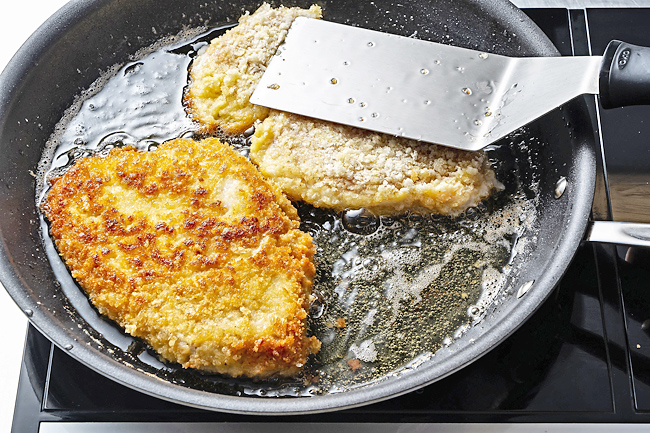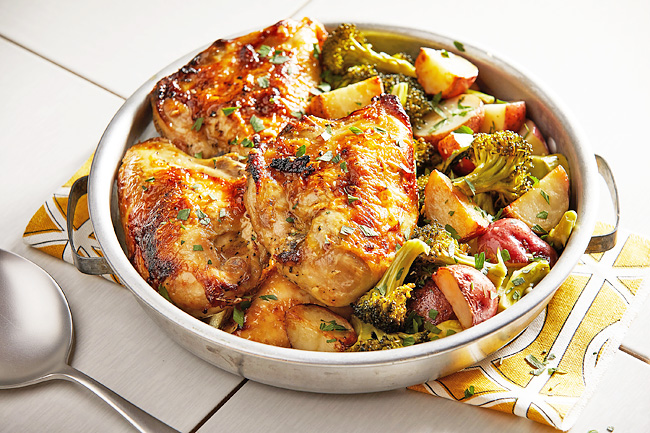Becky Krystal
THE WASHINGTON POST – The e-mail that arrived in my inbox last month laid out a common problem.
“For me, cooking chicken breasts is tricky because they are less forgiving than cooking dark meat – cook them too long and they are dry and don’t cook them enough and they are rubbery.”
Similar to what I recently wrote about how to not mess up a nice piece of fish, the key to properly cooked chicken breasts is, well, not overcooking them. Cooking meat covers a spectrum of textures, colours, flavours and, of course, temperatures. As you go higher in temperature, the proteins shrink, moisture is pushed out and the meat turns stiff and dry. All those things are especially unpleasant, and easy to do, with chicken breasts. The margin of error is much lower than with chicken thighs and other dark meat, which can be juicier at temperatures up to 195 degrees Fahrenheit.
Regardless of the cut or cooking method, the United States Department of Agriculture (USDA) recommends poultry be cooked to an internal temperature of 165 degrees Fahrenheit to reduce the likelihood of foodborne illness. (If you cook meat, you should definitely have a food thermometer!) This doesn’t always sit well with culinary professionals.


Eliminating bacterial risk relies on a number of factors beyond a single temperature point, including moisture and fat content, J Kenji López-Alt noted in The Food Lab. The combination of temperature and time can help determine when chicken is safe to eat. He said chicken cooked to 155 degrees Fahrenheit and held there for about 44 seconds allows for a sufficient reduction in bacteria; at 160 degrees Fahrenheit, it’s about 14 seconds. If you feel comfortable with this matrix, go for it. If you want to stick to the USDA advice because it feels safer and easier, please do.
Before I go into my tips, you’ll notice I left out two common suggestions. One is brining. To me, brining puts a damper on one of the benefits of choosing chicken breasts: how quickly they cook. Plus, brining can give you “a definite case of wet-sponge syndrome”, thanks to the way the salt makes breasts hang on to so much moisture, López-Alt said. Marinades are another technique I’m skipping here. Marinades do not necessarily tenderise meat or keep it juicy. They are more of a surface treatment that add exterior flavour at best or, at worst, turn the chicken unappetisingly mushy if it’s too acidic and applied too long.
I’m not saying you shouldn’t do these, but neither is more effective than just not overcooking chicken breasts. Here are my tips for avoiding that fate.
1. USE BONE-IN BREASTS
The hollow or honeycomb structure of bones allow them to act like an insulator, Harold McGee said in On Food and Cooking. Bone-in breasts have that built-in insurance policy against overcooking. They also are generally sold with the skin on, which forms a barrier that can prevent the meat from losing as much moisture.
2. MAKE THE CHICKEN THINNER
One of the hardest things about boneless breasts is how uneven they are, with one wide, thick side that tapers into a thinner, narrower end. By the time the thick end finally cooks through, the thin one is overdone, or if you try not to overcook the thin side, the thick side can be underdone.
Especially when cooking chicken in a skillet, the answer is to aim for a more uniform thickness, so that the pieces cook more evenly and in less time. Thinner breasts or cutlets are less likely to dry out, as they won’t spend as much time in the pan.
A simple option is to pound the chicken until it is quarter to half inch thick, using a meat mallet/pounder, heavy skillet or even a hammer. This is best done between parchment paper or plastic wrap. You can also butterfly the breasts (so they open like a book) or cut them completely in half into thinner cutlets, but I find with these strategies you can still get a paper-thin end prone to overcooking. Over at America’s Test Kitchen, Mari Levine offers a clever suggestion: Split the breasts into three, instead of two, cutlets. Cut the breast in half crosswise so you separate the thicker and thinner ends. Then cut the thicker half into half again, horizontally. Finally, pound all three pieces to an even thickness.
3. BREAD OR BATTER THE CHICKEN
Breading and batters on meat don’t work by necessarily sealing in moisture while frying, McGee said. Instead, they serve more as insulation, protecting the meat from the heat of the oil. The surface of the coating dries out, guaranteeing that lovely crisp texture and further shielding the meat. It also helps that oil is less efficient than metal or water at transferring heat to the meat, so that it “gives the cook a reasonable window of time in which to stop the cooking while the meat is still moist”, McGee said.
4. POACH THE CHICKEN
As with fish, chicken breasts benefit from the gentle heat of poaching. As my former Washington Post colleague Jane Touzalin explained,
“Poaching is a method of cooking food gently in liquid that’s generally kept below a boil.”
Her suggestion: Place boneless, skinless chicken breasts in a pan in a single layer, cover with a few inches of liquid (water, broth), add flavourings (spices, salt, herbs, soy sauce), then bring the liquid just barely to a boil over medium-high heat.
Reduce the heat so the liquid simmers. Start checking the meat after about 10 minutes. The chicken should be barely opaque in the centre. Take the pan off the heat, put a lid on it and let it sit for 15 to 20 minutes.
There should be no pink in the centre, and you can confirm the temp by using a a thermometer.






